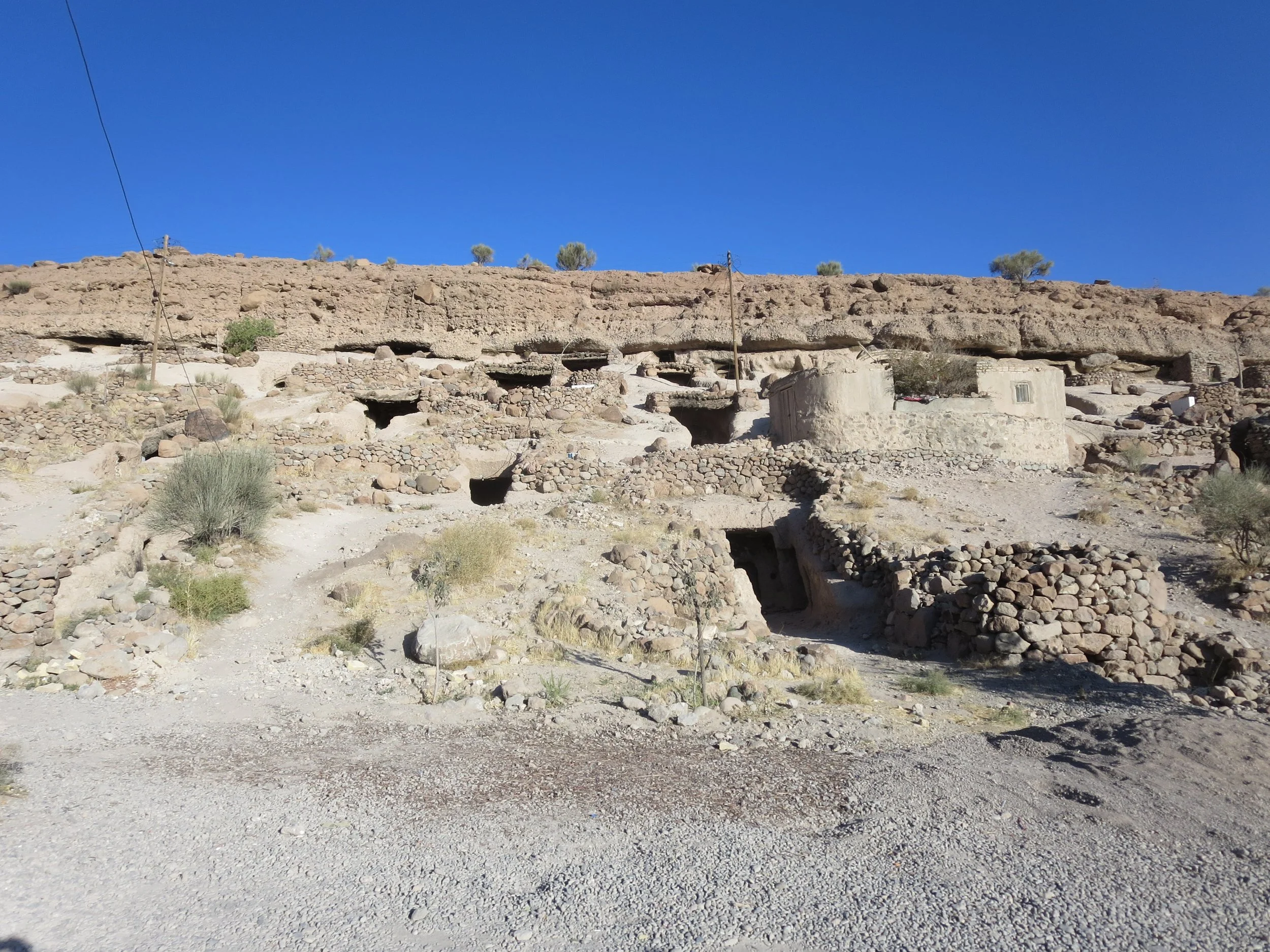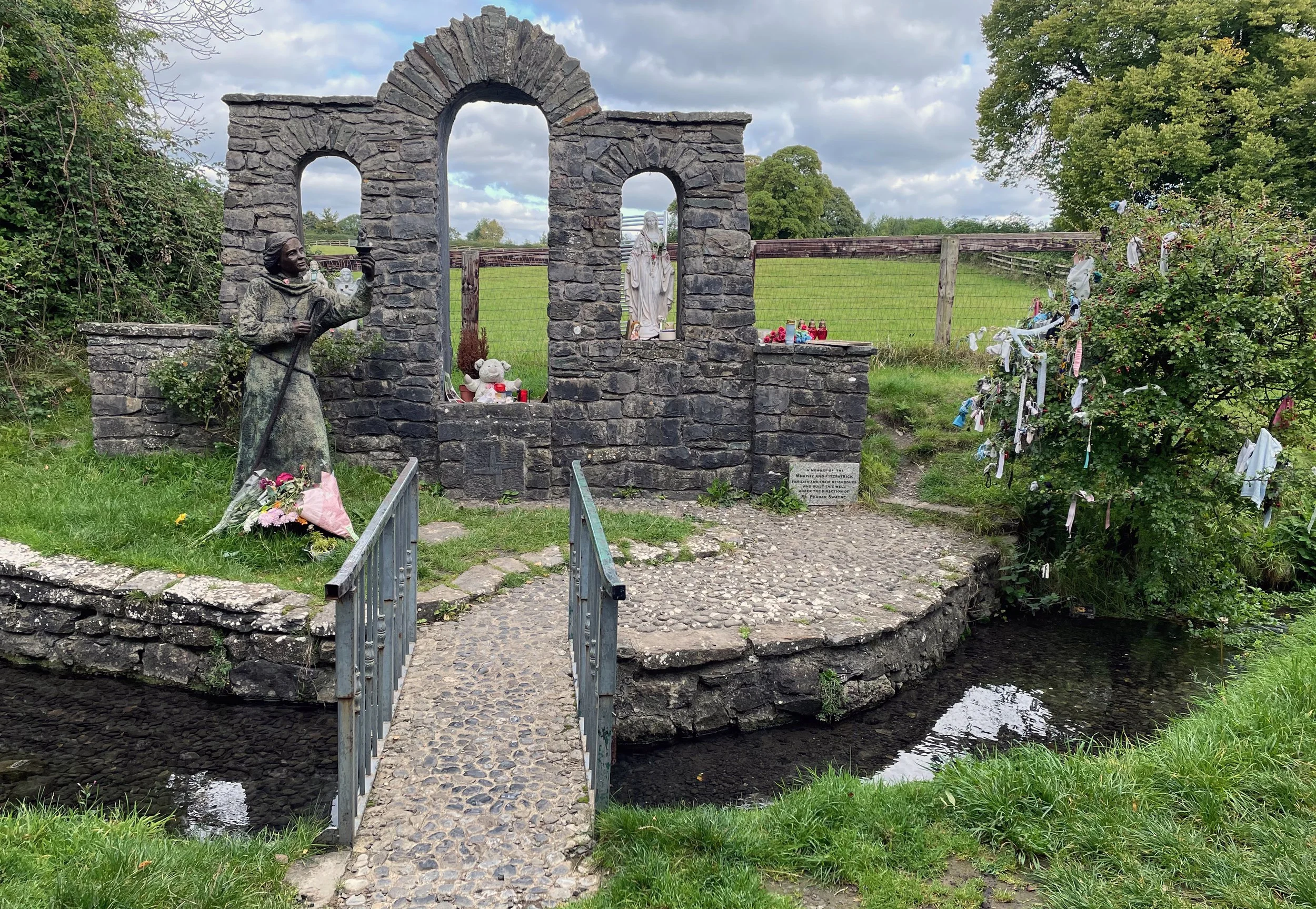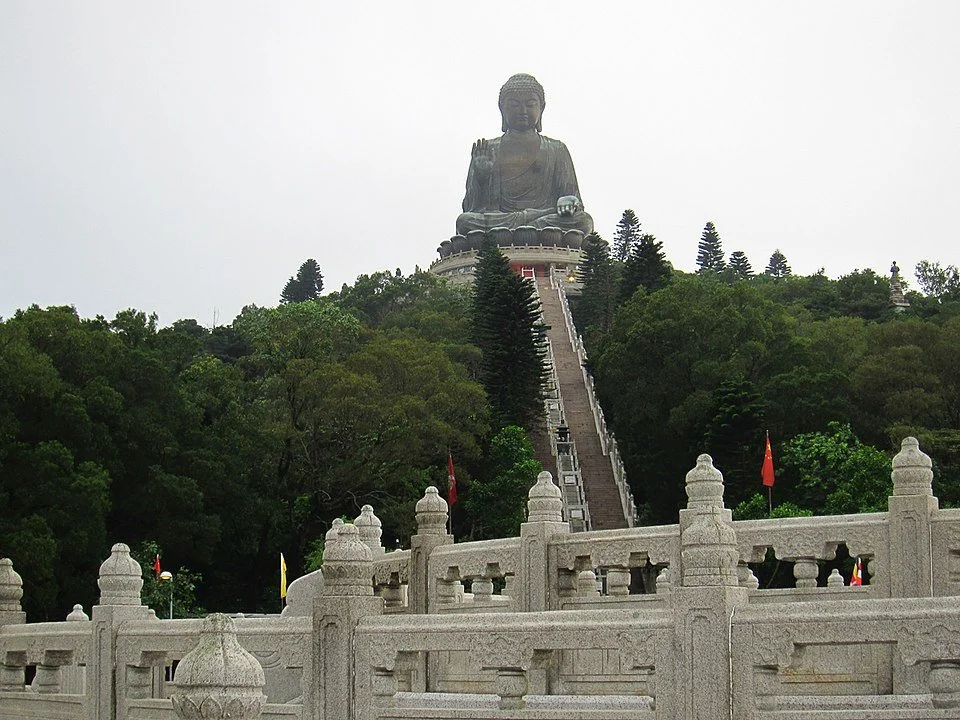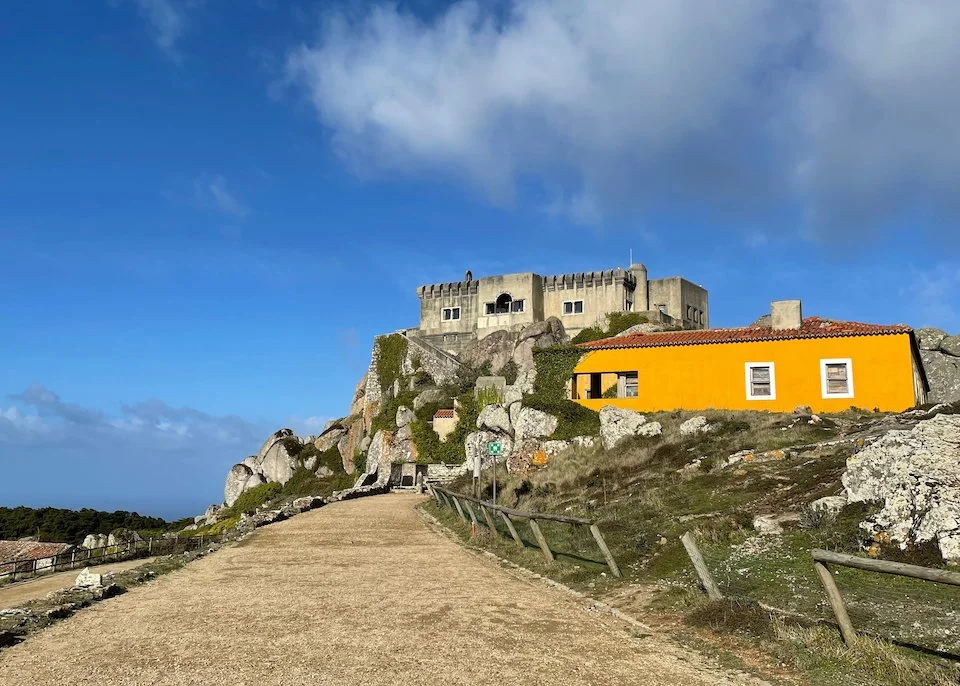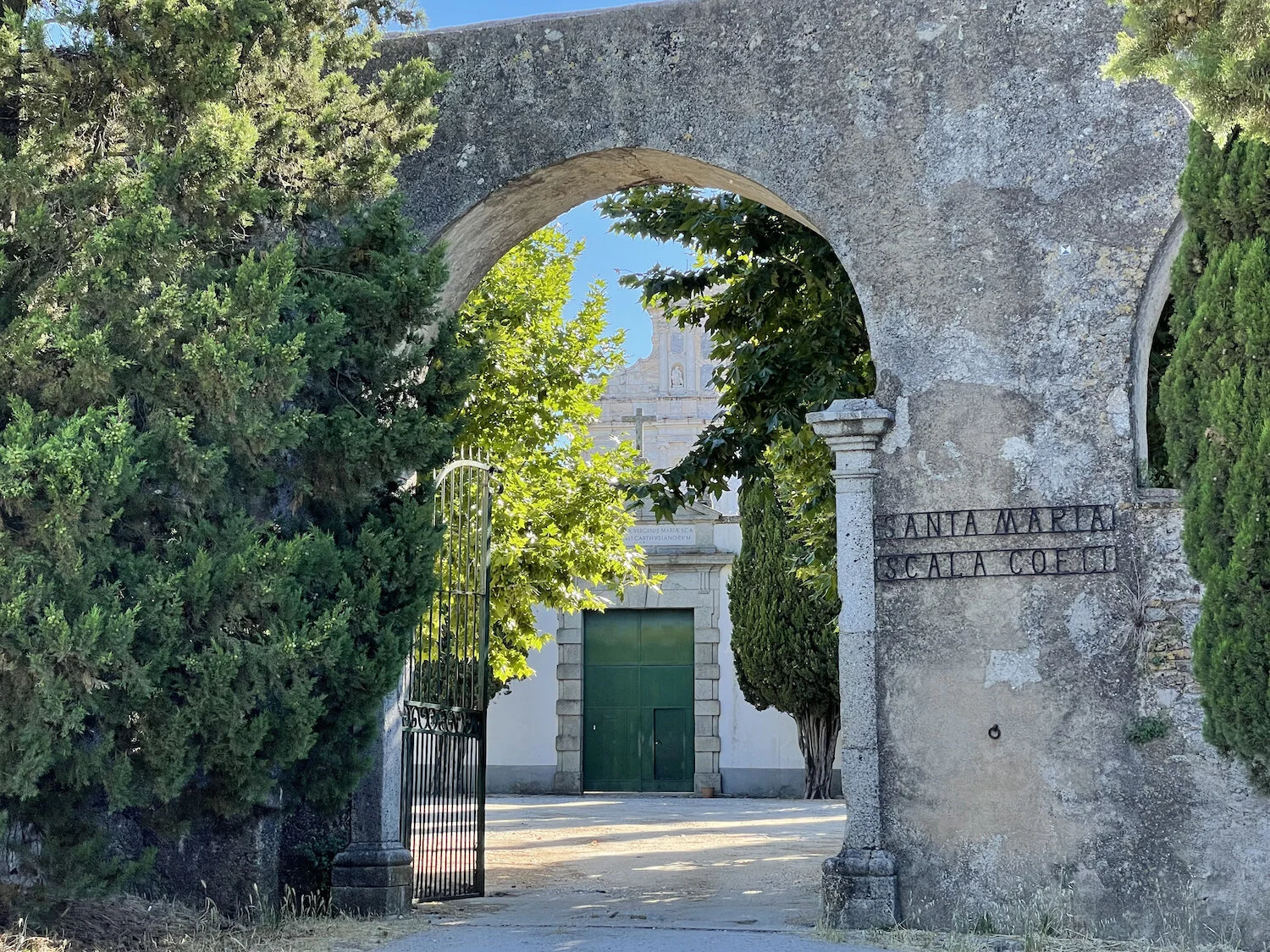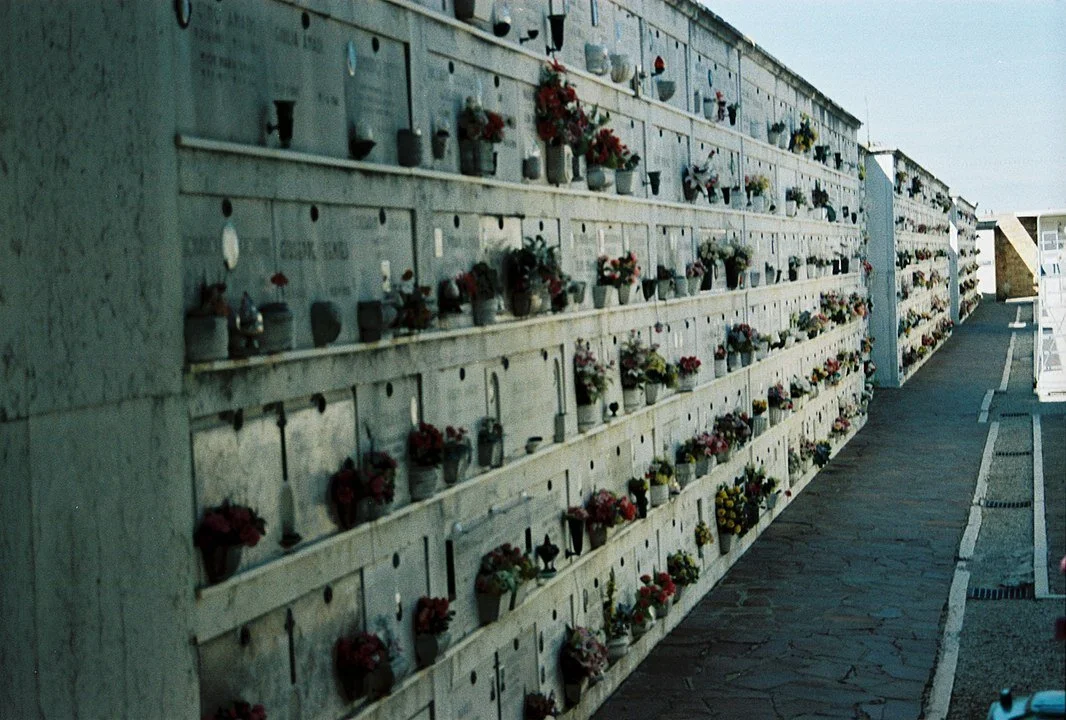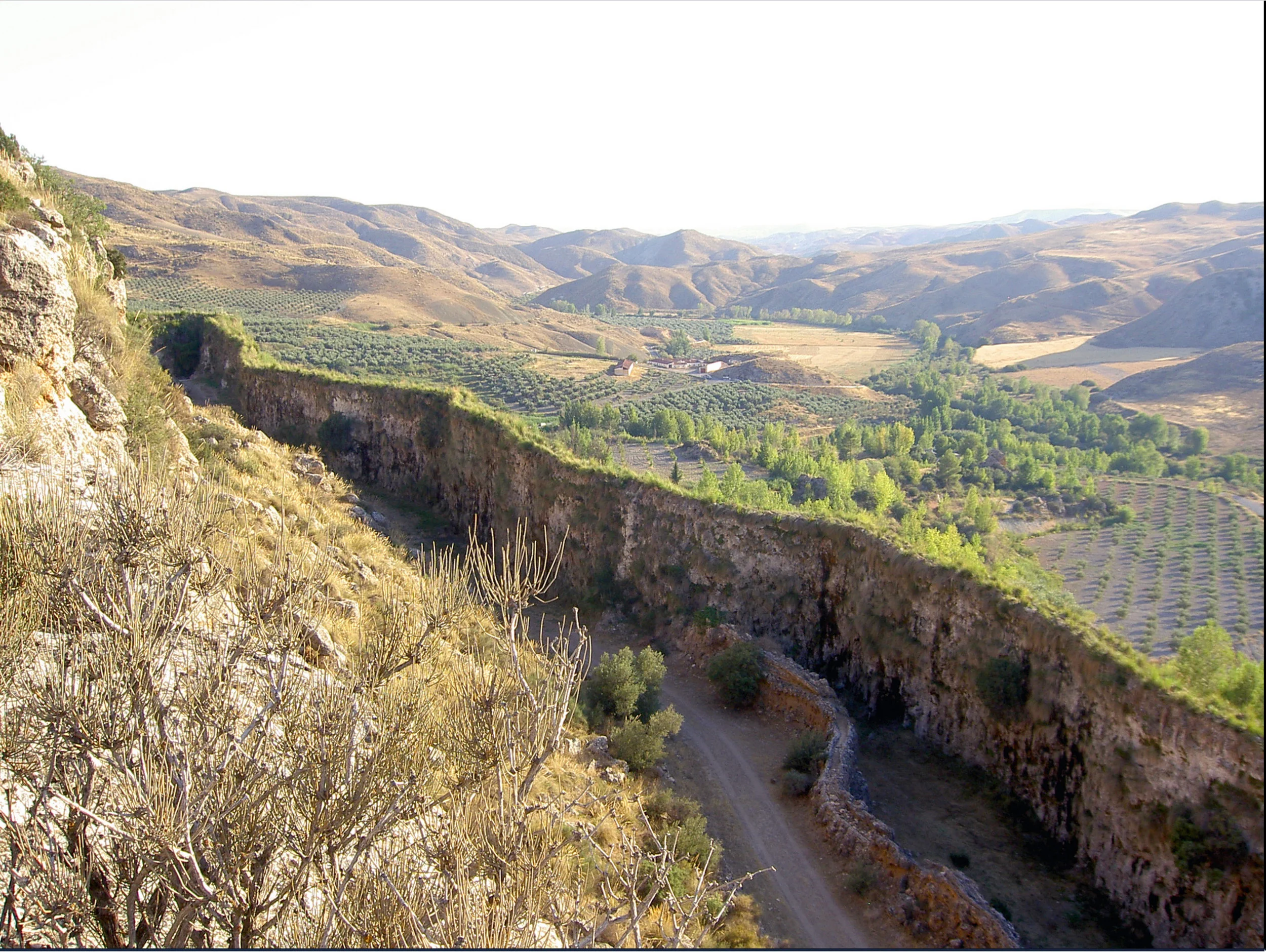Join Carolyn Handler Miller on an adventure through Cambodia's vibrant culture, where ancient traditions meet modern-day wonder. Amid the grandeur of Angkor Wat, an unexpected invitation leads to a mesmerizing Apsara dancing performance. But it's not just about the graceful movements—it's about the magic of a humble red yarn and the blessings it carries.
All in Sacred Places
Cave Dwelling in Iran
David Devine recounts an unexpected cave-dwelling adventure in Maymand, Iran, a UNESCO World Heritage Site. Despite the challenges of cramped caves, basic amenities, and a cold night's sleep, Devine embraces the unique experience, immersing himself in the cave community's history, hospitality, and charm. From the homemade bread to sharing stories with the locals, his stay in Maymand leaves a lasting impression.
Following Brigid’s Way Pilgrimage in Ireland
When Elyn Aviva and her husband traveled to Ireland to walk Brigid’s Way Celtic Pilgrimage, nothing went as planned. A friend who agreed to meet them couldn’t. Hotel reservations were canceled. Car rides along country roads and unexpected encounters with friends supplanted long solitary walks in nature. Yet, the journey was every bit a pilgrimage.
The Great Buddha
Irene Sardanis visited the Big Buddha in Hong Kong as a tourist. She returned as a pilgrim. Discover her journey to awe.
Miracles at Our Lady of Peninha
When a fear of heights threatens to derail Elyn Aviva from reaching the Sanctuary of Nossa Senhora da Peninha, a place of miracles situated atop a rocky coastal outcrop in Portugal, a stranger appears to help, again and again, at precisely the moments assistance is needed most.
For Whom the Bell Tolls
A personal tour of the Monastery of Santa Maria Scala Coeli, the Cartuxa de Évora, provides a rare opportunity for Elyn Aviva to discover, and share, a place of great spiritual and cultural significance, unique in Portugal.
Communing With The Dead
For Bobbi Lerman, a visit to a graveyard is an opportunity to stop and sit and listen to the stories of the dead. In this essay, Bobbi shares the experience of communing with the dead at Isola di San Michele, the island just across the water from Venice, Italy, that houses the city’s cemetery.
Sitting on Buddha's Head
It was 1976 and Mike Chambers was in Afghanistan on his way to see a standing Buddha that had been carved out of the walls of a canyon some fourteen hundred years earlier. Not long afterward, Afghanistan slipped back into the chaos it was to suffer for decades. and the experience had faded into memory until, 25-years later when Bamiyan's Buddha appeared in a TV news post.
Demystifying Malta
Elyn Aviva traveled to Malta to experience sunrise at the 5,500-year-old Mnajdra Temple on the day of spring equinox. Unexpected insights are revealed when the event wasn’t the sacred experience she’d anticipated.
The Mysterious Living Aqueduct in Spain
A visit to a mineral-springs health spa in southern Spain results in a mysterious sense of relaxation and well-being for Elyn Aviva.
What Happened After My Vision Quest
When Nancy King celebrated her 80th birthday with a vision quest ceremony in rural Quebec, she carried a lifetime of self-doubt into the forest with her. Today, she's free from all that. Find out what happened.
Looking for Gratitude on the Cornish Saints Way
Not every trip goes as planned. When writer Elyn Aviva and her husband embark on a pilgrimage of gratitude, unexpected obstacles reveal even more reasons to be grateful.
Preparing for a Vision Quest
Not everyone celebrates their 80th birthday alone in the wilderness for four days and four nights . But that's exactly what writer Nancy King elected to do when she signed up for a spiritual Vision Quest. Discover how she manages to tamp down fear and ready herself for the woods as she prepares for the big event.
The Silent Treatment
Mary Ann Treger is a talker. When she's not talking, she's texting or emailing or surfing social media sites. Being connected is her cocaine. Even alone at home, political pundits yak on the television in the background. So why would this motor-mouthed writer go cold turkey and sign up for a silent retreat in an isolated abbey where shutting-up is the numero uno requirement? Read on...
Temazcal Sweat Lodge in Cozumel
by Fyllis Hockman
I am sweating profusely. My pores are so overrun with liquid that I fear I will float away in a river of my own perspiration. Since I am molting inside a sweat lodge, I figure I can’t go very far. Temporarily reassured.
Pendeen Fogou wasn’t a very prepossessing site. To reach it, the three of us—my husband, Gary, our guide, Cheryl Straffon, and I—had to unfasten three rusty metal gates to venture ever deeper into a farmer’s cattle yard. The broken concrete beneath our feet was covered with several layers of dried (or drying) cow manure. Cattle were lowing and resting in their own muck in the nearby pens.
Our goal was a six-foot-tall stone structure with tall grasses and weeds growing out of the top and a yawning opening in one wall. Before we could enter the site, we had one more obstruction: a detached farm gate, which the three of us hauled over to one side.
Bending low, we followed Cheryl down a steep, stone-lined passage deep into the earth. I was grateful I had my hiking staffs to help keep me from slipping. At the bottom, the rocky passage leveled out. My flashlight illuminated moss-covered granite walls and ceiling, the large stones carefully placed to construct the fogou. Pronounced “foo-goo,” it’s a Cornish word that means “cave,” and it refers to a human-made underground cavern.
Unkempt little bodies jump from stone to stone. Lithe and agile. Darting now towards, then away from the never-ending stream of tourists flowing over the raised wooden causeways of Beng Mealea. They claim the messy jumble of unrestored stones of this temple, 40 kilometres east of Angkor, on the ancient royal way, as their playground. Nearly nine centuries of heat and humidity have played havoc with the precise placement of the blue sandstone blocks. Gone is the former wealth and glory of the mighty Khmer Empire. In its place poverty reigns.
At each consecutive temple I visit they keep buzzing around me in swarms. Irritating little mosquitoes. Sometimes noisy and persistent, other times quiet and watchful. Even if I try, I cannot seem to avoid their persistent onslaught. “Lady! Lady!” Dirty little hands push tacky souvenirs I don’t want in my direction. I am determined not to make eye contact. I don’t want to see them. “Only one dolla!” I hasten my pace, and keep my face stern. I focus on the beauty and splendour of the temple in front of me. They give up, and turn their attention to their next victim.
Would You Eat Your Lunch in a Cathedral?
Musing at Scorhill Stone Circle, England by Elyn Aviva
We trudged up the bleak hill, brown and barren. My husband, Gary, and I were hiking with a small group in desolate, wild Dartmoor National Park to a place we’d never been, following a faint path through the moor, a track barely visible in the water-logged, peaty soil. Our guide informed us that people can easily lose their way on the moors—experienced hikers, skilled in reading maps, disappear, their bodies found years later.
My Journey to the Union of Heaven and Earth
by Elyn Aviva
Join me on a journey into the unknown, where what you think you know melts away and is replaced by something bigger.
My Journey to the Union of Heaven and Earth
by Elyn Aviva
Join me on a journey into the unknown, where what you think you know melts away and is replaced by something—something “bigger.”
For decades I have been drawn to sacred sites and powerful places, drawn to go on pilgrimage across France and Spain, drawn to place my feet in the footsteps of if not my ancestors then of the ancestors of spirit who have traveled these paths before me. Like iron pulled toward a magnet, I have sought out well- and little-known places of power—ancient stone circles, half-buried dolmens, ruined Romanesque chapels, spire-topped inspiring cathedrals, thick forests, hidden holy wells, dark sacred caves. Seeking I knew not what, going I knew not why, except that I was driven by a simple but all-consuming question: “What are these places?” I think I hoped that, by going to enough of them, I would find the answer.

